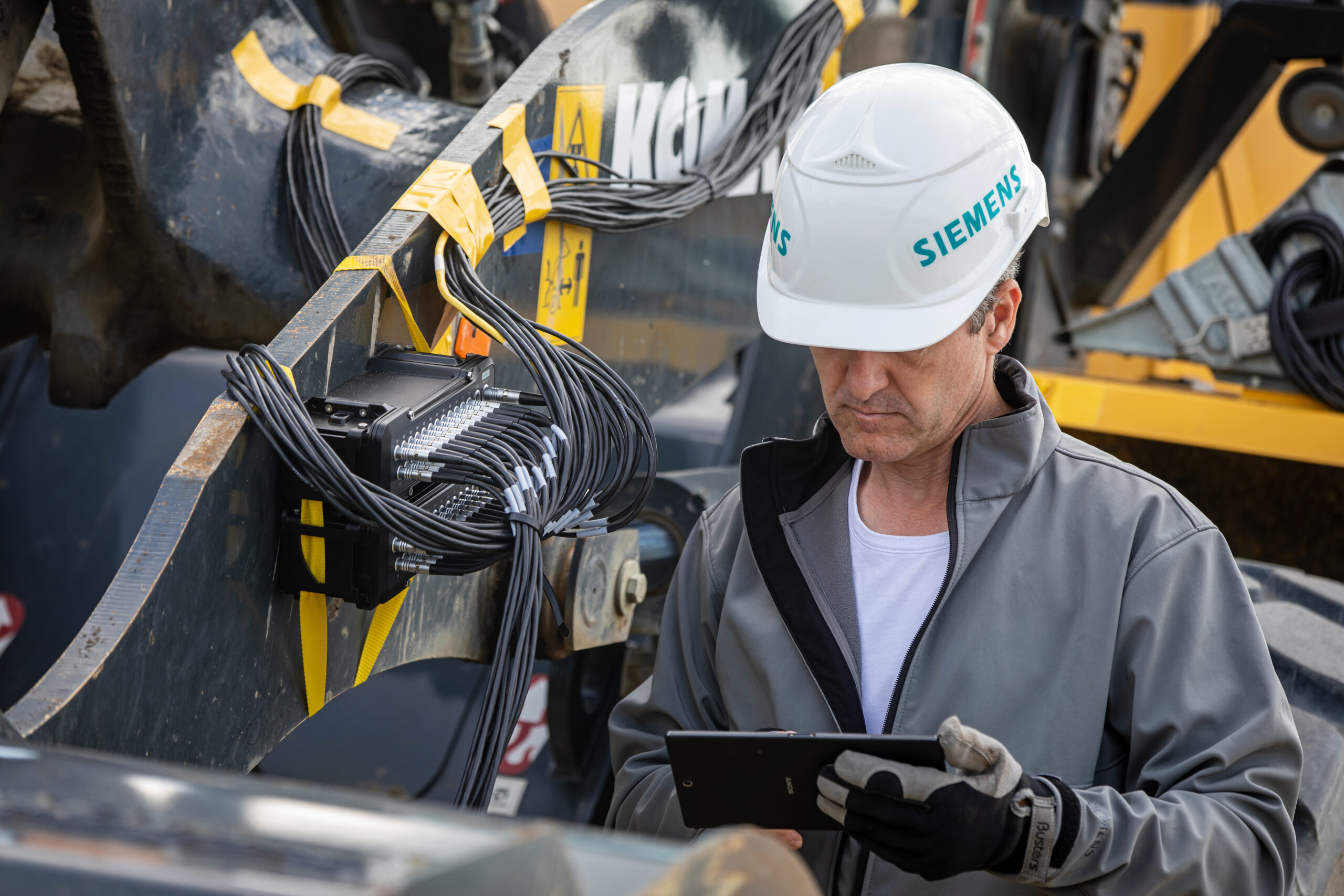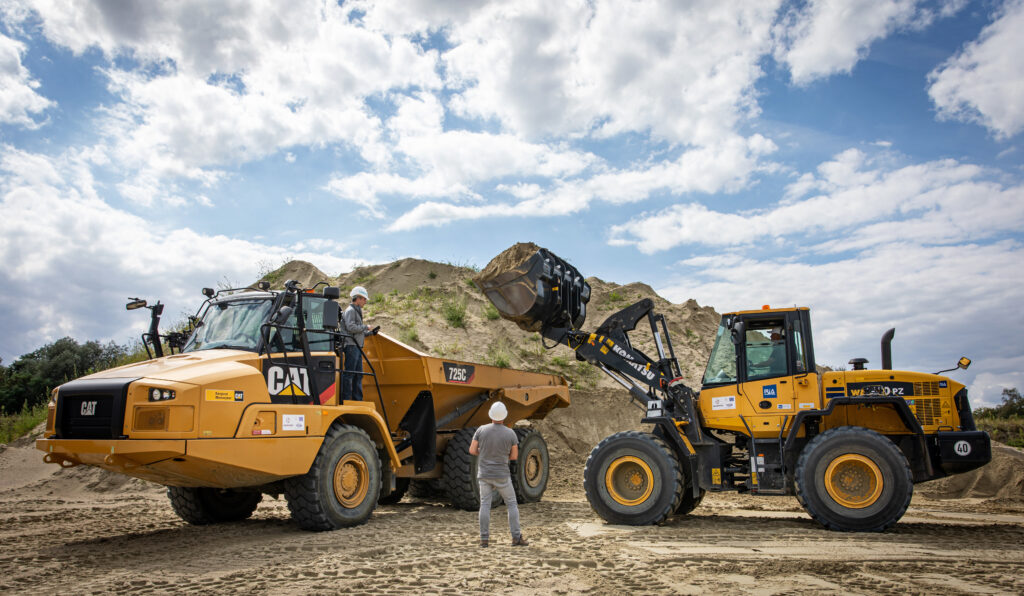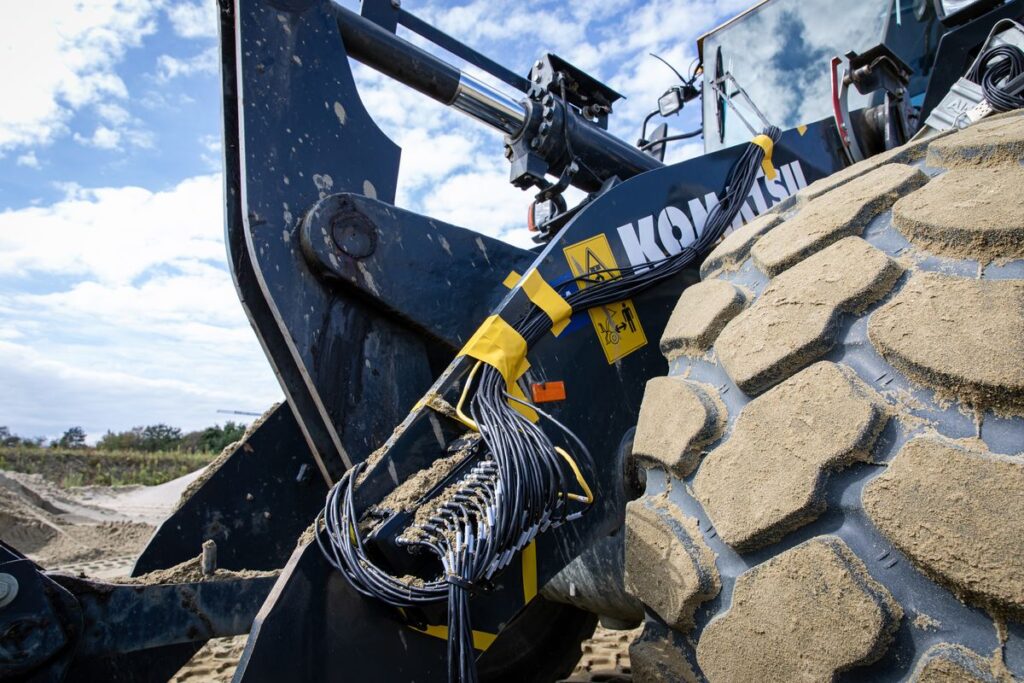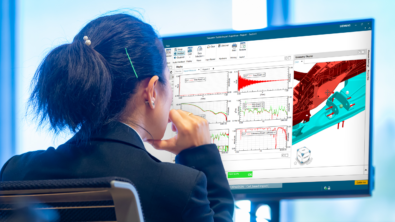Simcenter SCADAS RS: built-in ruggedness

Specific applications require specific tools. A heavy equipment manufacturer, agricultural machinery OEM or Truck and Bus manufacturer needs to take very demanding use cases into account in designing new vehicles or machines. They require intensive testing in some quite demanding operational conditions.
What do these testing conditions exactly mean? What are typical weather conditions? How are these machines and vehicles actually used? Well, the range is broad, to say the least.
Let’s start with weather conditions. Agricultural equipment and off-highway vehicles are used across the globe, in weather conditions ranging from arctic freezing to desert hot, and anything in between. But it doesn’t stop with temperature only. Rain, snow and fine desert dust are part of the game and make life hard for any machine or vehicle that is operated under these circumstances. To say that these conditions can sometimes be extremely difficult to work with is an understatement.
Not only are these vehicles and machines used under extreme climatic conditions; they’re also designed for ‘heavy duty’ loads and for rough terrains. They need to be able to perform these tasks under all circumstances, with a multitude of loading conditions and use cases. And designing a data acquisition system for these applications is not a walk in the park. Still, this is exactly what Simcenter SCADAS RS was made for.

High temperature range
First of all, one should not worry about arctic conditions or desert heat. The Simcenter SCADAS RS operating range is -40°C (-40F) to +65°C (+150F), making it fit for any test condition, be it in polar regions or in the summer heat of the hottest desert.
This operating temperature range is not just a matter of putting a number on a datasheet. It consists of a careful selection of electronic components, taking into account power dissipations inside the equipment and resulting temperature hotspots. It consists of designing conductive paths inside the hardware to ensure maximum power dissipation to the outside.
And finally, it consists in an actual test, soaking the system to -40°C and powering it up; or putting it in a temperature chamber at +65°C and verifying correct operation even under these extreme conditions. The proof of the pudding is in the eating, and that’s exactly what Simcenter SCADAS RS lives up to.
Water and dust proof
As already mentioned, weather conditions don’t stop with temperature only. Snow and rain, fine desert dust make the use of any electromechanical device a real challenge. That’s where IP rating comes into play. Simcenter SCADAS RS is designed and tested to IP rating 66/67.
Now what does this mean? The first number in the IP rating stands for dust protection. The higher the number, the finer dust particles need to be to ingress inside the housing of the equipment used. It stops at IP dust rating 6: this actually means the internal electronics are completely protected from dust, whatever the size of the particles: a sealed enclosure is preventing any dust from entering inside.
This is what Simcenter SCADAS RS is designed for. A single front plate covers the internal electronics, with appropriate sealing between the housing and the front plate. All connectors are integrated on the front-plate and are sealed of individually.
But that is not sufficient for water ingress. The second letter of the IP rating defines water ingress protection and breaks down in two categories.
IP66 means protection against water ingress from pressurized water sprays. The test consists of a water spray of 100 liter/minute (0.37 imperial gallons/s) at 100kPa (15 psi) and a distance of 3m (9.8ft) for a duration of 1 minute. IP67 means protection against water ingress when submerged; more in particular, the IP67 test consists of submerging the device under 1m of water for 30 minutes.
And finally, winter conditions on public roads may include de-icing of roads using salt. For this reason, Simcenter SCADAS RS units undergo a salt test according to ISO 12944-2 Class C5I.
Again, Simcenter SCADAS RS endured the full envelope of these tests during its design and certification.

Heavy loads
Excavators, tractors, dozers, dumpers, shredders, loaders … There’s quite some heavy equipment out there! They’re not designed for the easy jobs: they do the toughest of tasks under the toughest of conditions.
Acquiring load data from different use cases requires an equally tough data acquisition system that can be mounted anywhere on the vehicle or machine, regardless of whether it is a location exposed to loads or not. Here as well, Simcenter SCADAS RS proves its worth as a best-in-class performer.
All Simcenter SCADAS RS units are subject to two types of load tests.
The first test is a shock test of 100g. Each Simcenter SCADAS RS unit is tested in all directions (X, Y, and Z) during operation, three shocks per direction. This test is compliant with MIL-STD-810F, method 516.5, procedure I. The next test is a random vibration test of 10g in all directions (X, Y and Z) for one hour. This is a test according to MIL-STD-810F, method 514.5, procedure I, category 24, from 2-2000 Hz. Again, the test is performed under operating conditions, i.e. with units switched on and acquiring data.
Stable operation
Finally, heavy equipment machines and vehicles are not designed for powering a data acquisition system. They provide DC power, often unregulated and subject to large power drops. Nevertheless, this is the only power available out there in the field.
Simcenter SCADAS RS is designed for operating from these unregulated supplies. Power to a Simcenter SCADAS RS system is provided by a UPS unit. It provides stable, 48V and 100W output power from 9.5 to 54VDC input voltage. It contains an internal buffer that provides autonomous power even under conditions of prolonged cranking. And it provides this stable power over the entire temperature range, starting up from external DC voltage, even when soaked at -40°C (-40F) or 65°C (150F).
Do you need rugged testing equipment? Simcenter SCADAS RS will do the job!
Read more about it here.


